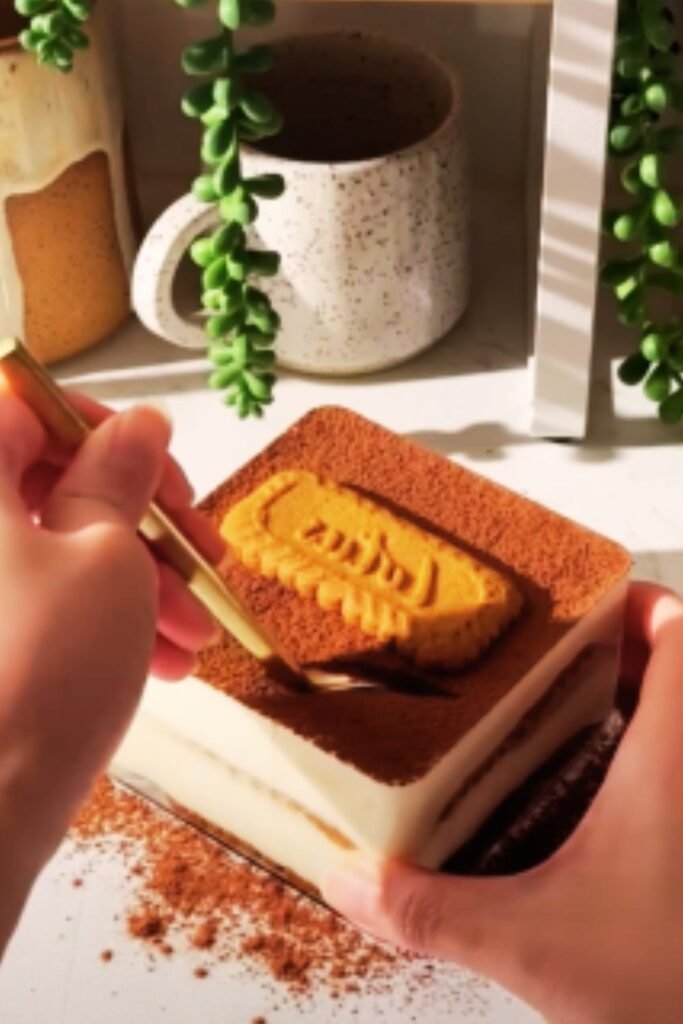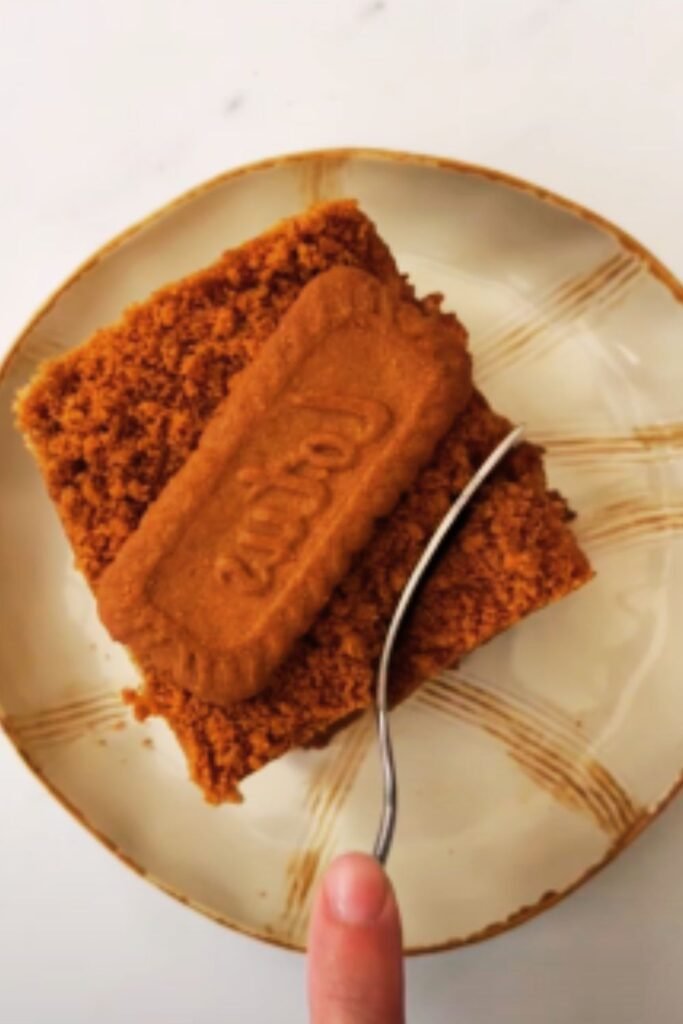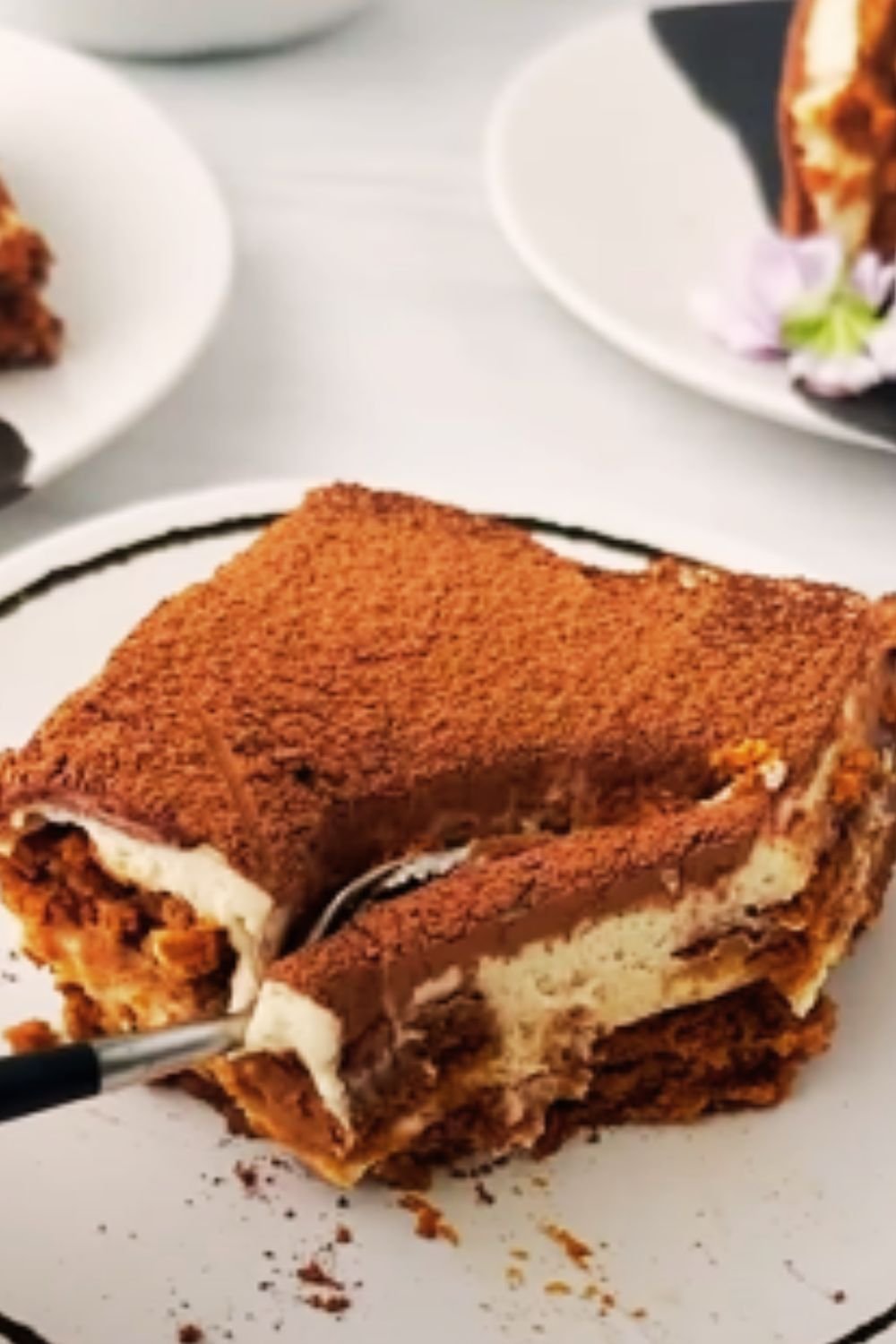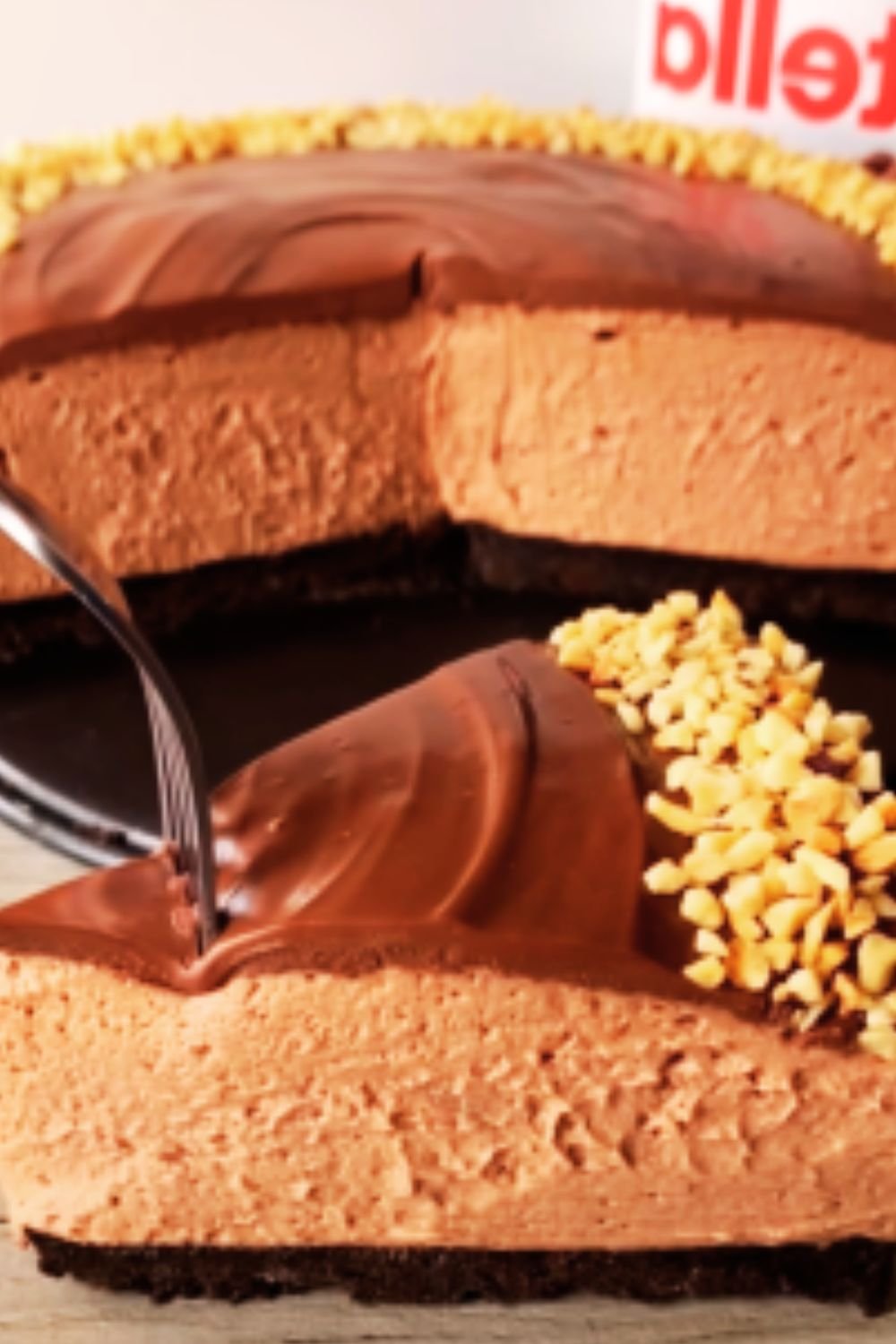When I first discovered the magic of combining Biscoff cookies with traditional tiramisu, my world changed forever. This isn’t just another dessert recipe – it’s a love letter to two of my favorite treats rolled into one spectacular creation. The caramelized, spiced sweetness of Biscoff cookies paired with the creamy, coffee-kissed layers of classic tiramisu creates something truly extraordinary.
I’ve been perfecting this recipe for years, and I can confidently say it’s become the star of every dinner party I host. The best part? You don’t need to be a pastry chef to master this show-stopping dessert. With a few simple techniques and quality ingredients, you’ll create something that looks and tastes like it came from a high-end Italian restaurant.
What Makes Biscoff Tiramisu Special
Traditional tiramisu holds a sacred place in Italian cuisine, but my Biscoff variation brings something entirely new to the table. The distinctive caramel and cinnamon notes of Biscoff cookies create a deeper, more complex flavor profile than traditional ladyfingers. I’ve found that the cookies’ natural spices complement coffee beautifully, while their sturdy texture holds up perfectly against the creamy mascarpone mixture.
The transformation happens during the layering process. As the Biscoff cookies absorb the coffee mixture, they soften just enough while maintaining their structural integrity. This creates distinct layers that don’t collapse into mush – a common problem I’ve encountered with other cookie substitutions.
Essential Ingredients Breakdown
Understanding your ingredients makes all the difference in achieving bakery-quality results. Here’s what I consider absolutely crucial for this recipe:
Biscoff Cookies : The star ingredient that replaces traditional ladyfingers. I prefer using the original Biscoff cookies rather than the chocolate-covered variety for this recipe. Their caramelized flavor and firm texture are perfect for soaking up coffee while maintaining structure.
Mascarpone Cheese : This Italian cream cheese is non-negotiable. I’ve tried substituting with cream cheese, but mascarpone’s silky texture and subtle sweetness are irreplaceable. Always use room temperature mascarpone to avoid lumps.
Strong Espresso or Coffee : The coffee needs to be robust enough to penetrate the cookies and balance the sweetness. I brew mine extra strong – about double the normal strength. Cold brewing works beautifully too if you plan ahead.
Heavy Whipping Cream : Fresh cream whipped to soft peaks creates the light, airy texture that makes tiramisu special. Avoid pre-whipped products as they don’t hold their structure as well.
Large Eggs : Fresh, high-quality eggs are essential for the zabaglione base. I always use room temperature eggs as they incorporate more easily.
Biscoff Spread : This cookie butter adds an extra layer of flavor and helps bind the mascarpone mixture. A little goes a long way.

Step-by-Step Preparation Guide
Creating perfect Biscoff tiramisu requires patience and attention to detail. I’ve broken down the process into manageable steps that ensure success every time.
Preparing the Coffee Mixture
Start by brewing your coffee much stronger than you’d normally drink. I use a 1:8 ratio of coffee to water instead of the typical 1:15. The coffee should be bold enough to stand up to the rich mascarpone and sweet Biscoff cookies.
Once brewed, let the coffee cool completely. Hot coffee will melt your carefully whipped cream layers and create a soggy mess. I often brew mine the night before and refrigerate it overnight.
Add a splash of coffee liqueur if desired – about two tablespoons per cup of coffee. This isn’t essential, but it adds depth and helps the cookies absorb the liquid more evenly.
Creating the Mascarpone Mixture
This is where technique really matters. Start by separating your eggs while they’re cold – it’s much easier. Then let both whites and yolks come to room temperature, which takes about 30 minutes.
Whisk the egg yolks with sugar until they’re pale and thick. This usually takes about 3-4 minutes with an electric mixer. The mixture should fall in ribbons when you lift the beaters.
In a separate bowl, whip the mascarpone until smooth. I can’t stress enough how important it is to start with room temperature mascarpone. Cold mascarpone will create lumps that are nearly impossible to smooth out.
Gently fold the mascarpone into the egg yolk mixture, followed by the Biscoff spread. The key word here is “gently” – aggressive mixing will deflate your mixture and create a dense final product.
Whipping and Folding Techniques
In a clean bowl with clean beaters, whip the heavy cream to soft peaks. Over-whipping will create butter, so stop as soon as the cream holds its shape but still looks silky.
In another clean bowl, whip the egg whites to soft peaks. They should hold their shape but still look glossy and smooth.
Now comes the crucial folding technique. Add about one-third of the whipped cream to the mascarpone mixture and fold gently using a rubber spatula. Use a cutting and folding motion rather than stirring. Repeat with the remaining cream, then fold in the egg whites using the same gentle technique.
Assembly Process
Choose your dish carefully. I prefer a 9×13 inch glass dish because it allows you to see the beautiful layers, but any similar-sized dish works. Glass or ceramic conducts temperature evenly, which helps the flavors meld properly.
Start with a thin layer of the mascarpone mixture on the bottom. This prevents the cookies from sticking to the dish and makes serving easier.
Quickly dip each Biscoff cookie in the coffee mixture. The timing here is critical – too quick and they won’t absorb enough flavor, too long and they’ll fall apart. I count “one Mississippi, two Mississippi” for each side.
Arrange the dipped cookies in a single layer, fitting them snugly together. Don’t worry if you need to break some to fit – the cream will hide any imperfections.
Spread half of the remaining mascarpone mixture over the cookies, using an offset spatula to create an even layer. Repeat with another layer of dipped cookies and the remaining cream.

Nutritional Information and Serving Details
Understanding what you’re serving helps with portion planning and dietary considerations. Here’s a comprehensive breakdown:
| Component | Per Serving (1/12 of recipe) | Daily Value % |
|---|---|---|
| Calories | 485 | 24% |
| Total Fat | 32g | 41% |
| Saturated Fat | 19g | 95% |
| Cholesterol | 145mg | 48% |
| Sodium | 185mg | 8% |
| Total Carbohydrates | 42g | 15% |
| Dietary Fiber | 1g | 4% |
| Total Sugars | 35g | – |
| Protein | 8g | 16% |
| Calcium | 120mg | 9% |
| Iron | 1.2mg | 7% |
Serving Information:
- Recipe serves: 12 generous portions
- Prep time: 45 minutes
- Chill time: 4 hours minimum (overnight preferred)
- Total time: 4 hours 45 minutes
- Difficulty level: Intermediate
Flavor Profile and Texture Analysis
The beauty of this dessert lies in its complex flavor development. When I first bite into a properly made Biscoff tiramisu, I experience distinct layers of taste that unfold gradually.
The initial sweetness comes from the Biscoff cookies, with their signature caramelized sugar and warm spice notes. This gives way to the coffee’s bitter richness, which cuts through the cream and prevents the dessert from being cloying. The mascarpone provides a neutral, creamy base that allows both the cookie and coffee flavors to shine.
Texturally, you’ll notice the contrast between the softened but still slightly firm cookies and the light, airy cream layers. The cookies shouldn’t be mushy – they should yield to your fork but maintain some structure. The cream should be fluffy and light, not dense or heavy like frosting.
After proper chilling, the flavors meld together beautifully. The coffee penetrates the cookies completely, while the Biscoff spread in the cream mixture adds pockets of concentrated cookie flavor throughout.
Storage and Make-Ahead Tips
One of my favorite aspects of this dessert is how well it stores and actually improves with time. The flavors continue developing for up to three days, making it perfect for entertaining.
For optimal storage, cover tightly with plastic wrap, pressing it directly onto the surface to prevent a skin from forming. Alternatively, use aluminum foil, ensuring no air pockets remain.
Refrigerated properly, Biscoff tiramisu stays fresh for up to five days. The texture remains stable, and the flavors continue to develop. I’ve never had success freezing tiramisu – the cream separates and creates an unpleasant texture upon thawing.
When making ahead for parties, I actually prefer to prepare it 24-48 hours in advance. This gives the coffee time to fully penetrate the cookies and allows all the flavors to harmonize perfectly.
Creative Variations and Customizations
Over the years, I’ve experimented with numerous variations of this basic recipe. Here are some successful modifications I’ve developed:
Mini Individual Portions: Using small glasses or ramekins, create individual servings. This presentation is elegant for dinner parties and makes portion control easier.
Chocolate Biscoff Hybrid: Alternate layers using both regular Biscoff cookies and chocolate-covered ones. The chocolate adds another dimension of richness.
Spiced Coffee Variation: Add a pinch of cinnamon and nutmeg to your coffee mixture. These spices complement the Biscoff cookies beautifully and create a more complex flavor profile.
Lighter Version: Substitute half the mascarpone with Greek yogurt for a tangier, slightly lighter version. The texture changes slightly, but the flavor remains excellent.
Amaretto Enhancement: Replace coffee liqueur with amaretto for an almond-forward variation that pairs wonderfully with the caramel notes in Biscoff cookies.

Troubleshooting Common Issues
Even experienced bakers encounter challenges with tiramisu. Here are solutions to the most common problems I’ve encountered:
Lumpy Mascarpone Mixture: This usually happens when the mascarpone is too cold. Let it come to room temperature and whisk vigorously. If lumps persist, press the mixture through a fine-mesh sieve.
Soggy Bottom Layer: This occurs when cookies are over-soaked or the dish isn’t properly prepared with a base layer of cream. Always start with cream on the bottom and be consistent with your dipping timing.
Deflated Cream: Over-mixing after adding whipped cream and egg whites causes this. Fold gently and stop as soon as ingredients are just combined.
Separation During Storage: This can happen if the cream was over-whipped initially or if the dessert experiences temperature fluctuations. Maintain consistent refrigeration and avoid over-whipping.
Weak Coffee Flavor: Your coffee mixture may be too weak. Remember, the cookies will dilute the coffee flavor, so it needs to be quite strong initially.
Perfect Pairings and Serving Suggestions
This rich dessert pairs beautifully with several complementary flavors and beverages. I’ve found these combinations work particularly well:
Fresh Berries: The acidity in strawberries, raspberries, or blackberries cuts through the richness perfectly. I often arrange them around the serving plate for color and flavor contrast.
Espresso or Strong Coffee: Serving alongside the same coffee used in the recipe creates a cohesive flavor experience.
Sparkling Water with Lemon: The effervescence and citrus cleanse the palate between bites.
Herbal Teas: Chamomile or mint tea provides a gentle contrast to the dessert’s richness.
Dark Chocolate Shavings: A light dusting adds visual appeal and complements both the coffee and Biscoff flavors.
Seasonal Adaptations
I love adapting this recipe for different seasons and occasions. Each variation brings something special to the table:
Fall Version: Add a pinch of pumpkin pie spice to the mascarpone mixture and use maple syrup to sweeten the coffee slightly.
Winter Holiday Edition: Incorporate a touch of rum extract and dust with cinnamon for a festive twist.
Spring Celebration: Lighten the coffee with a splash of vanilla and serve with fresh mint garnish.
Summer Variation: Chill extra thoroughly and serve with fresh peach slices for a seasonal contrast.
Professional Presentation Tips
Presentation can elevate your homemade tiramisu to restaurant quality. Here are techniques I’ve learned from professional pastry chefs:
Use a sharp, thin knife dipped in warm water and wiped clean between cuts. This creates clean edges and prevents the layers from dragging.
Dust with cocoa powder just before serving using a fine-mesh sieve for even distribution. This classic finishing touch shouldn’t be skipped.
Garnish individual plates rather than the entire dessert. This keeps the presentation fresh and allows for customization based on guests’ preferences.
Consider the serving vessel carefully. White plates make the colors pop, while dark plates create dramatic contrast.
Ingredient Quality and Sourcing
The quality of your ingredients directly impacts the final result. I’ve learned to be selective about certain components:
Mascarpone: Italian brands typically have the best texture and flavor. Avoid low-fat versions as they don’t whip properly.
Biscoff Cookies: The original Belgian version has the best flavor and texture for this application. Generic “speculoos” cookies can work but may not hold their structure as well.
Coffee: Use freshly ground beans if possible. The coffee flavor is prominent in the final dessert, so quality matters significantly.
Eggs: Farm-fresh eggs create a richer, more stable zabaglione base. The yolks should be bright yellow and the whites should whip to glossy peaks.
Questions and Answers
Q: Can I make this dessert without raw eggs? You can substitute pasteurized eggs or use a cooked zabaglione method. For the cooked version, whisk yolks and sugar in a double boiler until they reach 160°F, then cool completely before proceeding. The texture will be slightly different but still delicious.
Q: How far in advance can I prepare Biscoff tiramisu? I recommend making it 24-48 hours ahead for the best flavor development. It can be made up to 3 days in advance, but the texture is optimal within the first two days. The flavors actually improve with time as they meld together.
Q: What’s the best way to serve clean slices? Use a sharp knife dipped in warm water and wiped clean between each cut. This prevents the layers from dragging and creates professional-looking portions. Cut with a swift, confident motion rather than sawing back and forth.
Q: Can I substitute the mascarpone with cream cheese? While possible, I don’t recommend it for the best results. Cream cheese has a tangier flavor and denser texture that changes the character of the dessert significantly. If you must substitute, use room temperature cream cheese and add an extra tablespoon of heavy cream to lighten the texture.
Q: Why do my cookies get too soggy? This usually happens from over-soaking the cookies in coffee. Dip quickly – about 2 seconds per side maximum. The cookies will continue absorbing liquid as the dessert chills, so they don’t need to be completely saturated during assembly.
Q: Can I use decaffeinated coffee? Absolutely! Decaf works perfectly well for this recipe. Choose a dark roast for the most robust flavor, as you’ll still want that strong coffee taste to balance the sweetness of the Biscoff cookies.
Q: How do I fix separated mascarpone mixture? If your mascarpone mixture looks curdled or separated, it’s usually because the mascarpone was too cold or the ingredients were mixed too vigorously. Try whisking in a tablespoon of warm heavy cream, or start over with room temperature mascarpone.
Q: What size dish works best for this recipe? A 9×13 inch dish is ideal for the proportions in this recipe. You can also use a 3-quart trifle bowl for a beautiful presentation, or divide the mixture among 8-12 individual glasses for elegant single servings.
Q: Is there a dairy-free version of this recipe? Creating a dairy-free version is challenging since mascarpone is central to tiramisu’s character. You could experiment with cashew-based cream cheese alternatives and coconut whipped cream, but the result will be quite different from traditional tiramisu.
Q: Can I add liqueur to make it more adult-friendly? Yes! Coffee liqueur, amaretto, or rum all work beautifully. Add 2-3 tablespoons to the coffee mixture. Remember that alcohol doesn’t cook off in this no-bake dessert, so adjust according to your preference and guests.
This Biscoff tiramisu represents everything I love about fusion desserts – it honors the original while creating something entirely new and exciting. The combination of familiar Italian techniques with the beloved flavor of Biscoff cookies results in a dessert that feels both nostalgic and innovative. Whether you’re entertaining guests or treating your family to something special, this recipe delivers restaurant-quality results with approachable home cooking techniques.


